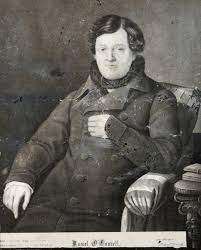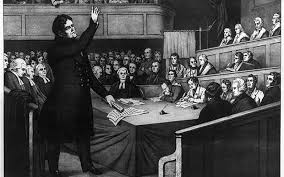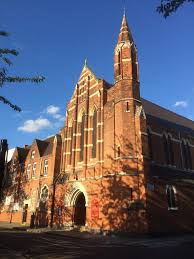The Catholic Emancipation is a process that helped the followers of the Roman Catholic Church in the United Kingdom to get rights to own property. The process included a number of legislative reforms that were taken up in various countries including Great Britain, Ireland and ultimately in the United Kingdom.
The complete process of these reforms came up to be known as the Catholic Emancipation, that was completed in 1829.
The Emancipation Process in Ireland
The followers of the Roman Catholic Church were spread over all of the United Kingdom by the 18th Century. However, the penal code and the legal structure of Ireland was not very tolerant of the Catholics.
This was reflected by the Disenfranchising Act that was passed by the Irish Government in 1728. According to this act, the followers of the Roman Catholic Church had no rights to vote or have any say in the political process of the country.
When this act was passed, the Catholics All over the country rebelled. The rebellion was headed by a lawyer named Daniel O’Connell. This act was passed to replace the Test Act of 1672 that prevented a number of basic rights to the Catholics, including the right to hold a position in the government office, and also having access to it in some cases.

When Daniel O’Connell started his revolt against the Disenfranchising Act, he started to gain major support from people. Gradually, many prominent leaders and political personalities of his time also started to support his cause. As a result of the opposition that the passage of the act was facing, the members of the Catholic Church were allowed to sit in the Parliament of Ireland.
What did the Catholic Emancipation Act of 1829 do?
The impact of the rebellion in Ireland started to affect all the countries of the United Kingdom. In Britain, the Catholics were oppressed by the penal code since the time of Henry VII. As a result of the emerging protests all over the United Kingdom, the first legislation against these penal laws was passed in 1778. Under the new law, the followers of Roman Catholic Church were allowed to own property in Ireland.
Even though this was a great change, it was just the beginning of the Catholic emancipation process. Followed by this, in 1791, the Roman Catholic Relief Act was passed. This act lifted all the major restrictions that were imposed on the Catholics on a legal front.
However, the Catholics in Britain were still forced to take an oath confirming their loyalty in order to exercise these rights. The next few years were prominent for the Catholics. In 1792, the marriage laws were relaxed by the government. By the next year, Catholics were given the rights to hold offices and also a right to vote.

Catholic Emancipation in United Kingdom
The Act of Union that was passed in 1800 dictated that the Parliament of Ireland is no longer an independent decision making body. Instead, Ireland started to be represented in the British Parliament that constituted the various other nations that had now become a part of the United Kingdom.
As a result of the formation of United Kingdom, Ireland was now a minority and the legislations that were passed by the government of Ireland held little relevance to the parliament of United Kingdom. Their superior position and majority in the parliament resulted in the British ministers to condemn the Catholic Relief Act. This became another challenge for Daniel O’Connell, who had managed to secure a government position in Ireland as a result of his efforts.
While he was not in as strong a position in the United Kingdom as he was in Ireland, Daniel O’Connell managed to lead the Catholic Emancipation movement again. He started an agitation along with the Catholic Association to gain the rights of Catholics to enter the parliament of United Kingdom.

As a result of the agitations led by Daniel O’Connell, the Test Act was considered void in 1828 by the Parliament of United Kingdom. However, this did not allow the Catholics to be a member of the Parliament, which meant that Daniel O’Connell was still not allowed to be a member of the decision making body of the United Kingdom.
The last blow to this was when Daniel O’Connell managed to fight the election from Co. Clare. He won the election and managed to secure his position. However, this resulted in a chain of protests in Ireland as the people were growing more and more intolerant of the Parliament of United Kingdom.
In order to suppress the oppression and the relieve Ireland of the internal tension, The Duke of Wellington and Prime Minister of the United Kingdom passed the Catholic Emancipation Bill in 1829. This bill granted complete rights to the followers of Roman Catholic Church and completed the process of Catholic Emancipation in United Kingdom.